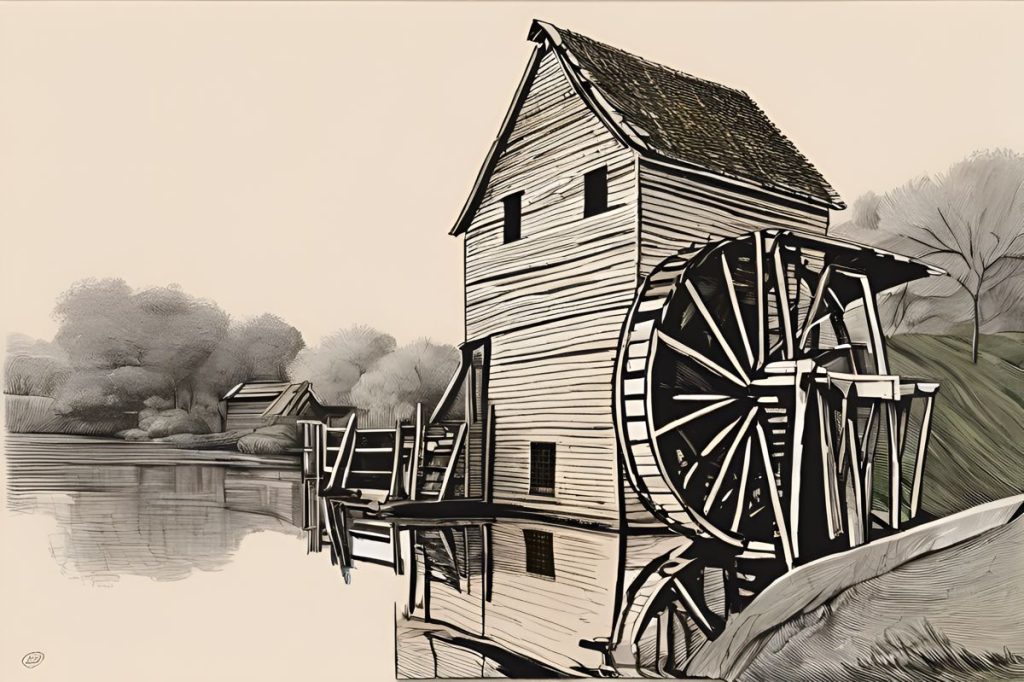The restoration of the Venetian watermill in Lefka showcases the community’s dedication to preserving cultural heritage, respecting its historical significance. With support from the EU and UNDP, the watermill and aqueduct now stand as monuments to past ingenuity and a shared commitment to safeguard Cyprus’s rich history.
What is the significance of the Venetian watermill restoration in Lefka?
The restoration of the Venetian watermill in Lefka symbolizes the community’s commitment to preserving cultural heritage. Meticulously renovated to respect its historical significance, the watermill and aqueduct now stand as monuments to past ingenuity and a shared dedication to safeguarding Cyprus’s rich history. This project, supported by the EU and UNDP, also emphasizes the role of preservation in maintaining cultural landmarks for future generations.
A Glimpse into the Past: The Venetian Watermill
Nestled in the verdant embrace of Lefka’s landscape, the restoration of a Venetian watermill and its accompanying aqueduct breathes new life into a page from history. This significant undertaking was proudly announced by the bi-communal technical committee for cultural heritage. The watermill, a herald of Lefka’s south, once stood as an industrious nucleus for grain processing, its origins tracing back to the Venetian occupation and persisting through Ottoman rule.
The committee has meticulously ensured that every step taken respects the mill’s storied past. Efforts included removing harmful vegetation, replacing deteriorated stones, and reinforcing the structure’s integrity. The aqueduct’s arch required particular attention—it was disassembled, treated for cracks, and reassembled, with hydraulic mortar now shielding it from the elements.
Restoration as a Symbol of Commitment
The watermill isn’t merely a relic; it’s a testament to a community’s dedication to preserving its cultural patrimony. The water tower and aqueduct now stand not only as monuments to our predecessors’ ingenuity but also as beacons of a shared commitment to safeguarding Cyprus’s rich heritage.
This project and the care instilled within every repaired stone have been made possible through the generous contributions of the European Union and the United Nations Development Program (UNDP). This collaboration underscores the importance of unity in the preservation of our shared history.
Future Endeavors and Cultural Preservation
While the watermill basks in its renewed glory, the committee co-chair Sotos Ktoris looks ahead to the imminent completion of four additional cultural heritage projects. The future holds restorations for the church of Ayios Sergios and Bacchos in Neta, the Arif Bey aqueduct in Aphania, the Mosque of the Whites, and the church of Archangel Michael in Rizokarpaso.
These projects are not simply restorations of structures but are acts of reinvigorating the stories and identities interwoven with these landmarks. Each effort to preserve is a step towards bridging histories and fostering a future enriched by the past.
The Role of Preservation in Modern Society
In a world where change is a constant, the value of preservation becomes ever more poignant. The mill and aqueduct in Lefka serve as a reminder that our cultural landmarks are more than stone and mortar; they are the keepers of stories, the teachers of history, and the heart of communities.
The work done here by the bi-communal technical committee for cultural heritage is an investment in cultural sustainability. As each project reaches completion, it becomes a part of a larger narrative—a narrative that speaks of care, respect, and the enduring bond between past and present. With these restorations, we ensure that the stories, practices, and lessons of yesteryears will continue to enlighten and inspire generations to come.
How was the restoration of the Venetian watermill in Lefka funded?
The restoration of the Venetian watermill in Lefka was funded with support from the European Union and the United Nations Development Program (UNDP). This collaboration highlights the importance of preserving cultural heritage and safeguarding Cyprus’s rich history.
What steps were taken to ensure the authenticity of the restoration of the Venetian watermill in Lefka?
The bi-communal technical committee for cultural heritage meticulously ensured that every step taken during the restoration respected the mill’s storied past. Efforts included removing harmful vegetation, replacing deteriorated stones, and reinforcing the structure’s integrity. Special attention was given to the aqueduct’s arch, which was disassembled, treated for cracks, and reassembled with hydraulic mortar.
What other cultural heritage projects are planned for restoration in Cyprus?
In addition to the restoration of the Venetian watermill in Lefka, the committee is working on four additional cultural heritage projects. These include the church of Ayios Sergios and Bacchos in Neta, the Arif Bey aqueduct in Aphania, the Mosque of the Whites, and the church of Archangel Michael in Rizokarpaso. These projects aim to preserve the stories and identities interwoven with these landmarks.
Why is the preservation of cultural heritage important in modern society?
In a world where change is constant, the preservation of cultural heritage becomes increasingly important. The restoration of the Venetian watermill in Lefka serves as a reminder that cultural landmarks are more than just physical structures—they are keepers of stories, teachers of history, and the heart of communities. By investing in cultural sustainability and preserving these landmarks, we ensure that the lessons and stories of the past continue to inspire future generations.

